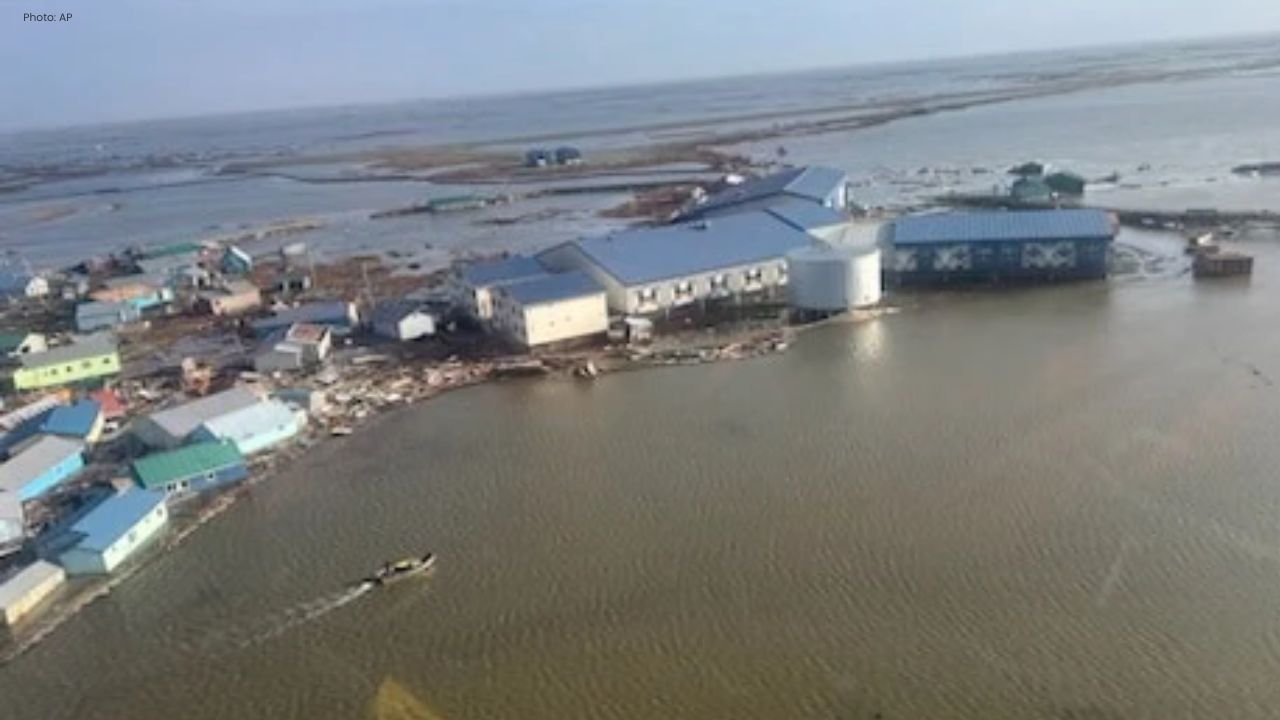
Amazon Fires Employee Over Israel Protest at Seatt
Amazon fires Palestinian engineer after he protested company's Israeli government contracts and dist

Parts of Alaska are facing monumental devastation after Typhoon Halong battered the Yukon-Kuskokwim Delta over the weekend. The storm, one of the most destructive to hit the region in recent years, caused severe flooding, intense winds, and widespread property damage across several coastal communities.
Alaska State Troopers confirmed on Monday, October 13, that one person has been found dead, while two others remain unaccounted for in the aftermath of the storm. The deceased individual was identified as an adult woman from Kwigillingok. Authorities stated her name will be released once the next of kin have been notified.
Dozens Rescued Amid Dangerous Conditions
Approximately 51 residents have been rescued from flooded areas, while search and rescue teams continue to work around the clock to locate missing individuals. The affected communities include Kipnuk, Kwigillingok, and Napakiak, which have been among the hardest hit by Typhoon Halong’s destructive path.
Search efforts are being coordinated by Alaska State Troopers, in collaboration with the U.S. Coast Guard, Alaska Army National Guard, and Alaska Air National Guard. Aerial units were deployed at first light on Monday to assist in identifying stranded residents and assessing damage across the remote delta region.
Authorities also confirmed that two dogs were rescued from the floodwaters in Kipnuk and Kwigillingok. However, troopers noted that they have received “secondhand reports” of additional missing people and are working to verify those claims as the situation evolves.
Houses Swept Away by Storm Surges
The storm’s impact has been catastrophic. According to early assessments, at least eight homes were pushed from their foundations due to storm surges and sustained winds reaching close to 100 miles per hour. The Alaska Division of Homeland Security and Emergency Management confirmed that the combination of heavy surf, coastal flooding, and hurricane-force winds caused extensive destruction throughout the region.
Strong gusts and flooding continued overnight, making access to remote communities even more challenging. Emergency shelters have been established for residents who lost their homes or were displaced due to flooding and structural damage.
Government and Federal Response
U.S. Senator Dan Sullivan expressed deep concern for the residents of Western Alaska, saying that he and his team were closely monitoring the situation. “We are tracking reports that houses have been swept away and that some Alaskans may have gone missing,” Sullivan said in a statement on Sunday evening. “We are all praying for the safety of everyone in Western Alaska.”
The senator also confirmed that he has been in close coordination with the Federal Emergency Management Agency (FEMA), as well as tribal and state officials, to ensure a swift and comprehensive response to the unfolding crisis.
A Region Long Vulnerable to Coastal Storms
The Yukon-Kuskokwim Delta is one of Alaska’s most flood-prone areas, with many communities built on low-lying tundra along the Bering Sea coast. As the storm made landfall, massive waves and storm surges inundated coastal villages, cutting off roads and leaving some areas accessible only by air or boat.
Local officials said recovery could take weeks, with power lines downed, communication networks disrupted, and infrastructure heavily damaged. Emergency teams are also working to restore essential services, including electricity, clean water, and medical access.
A Continuing Crisis
As of Monday evening, search and rescue operations remain “active and ongoing.” State and federal officials have warned that it may take several days before the full extent of Typhoon Halong’s damage is known.
Authorities continue to urge residents in affected areas to remain sheltered and avoid flooded zones as emergency crews carry out rescues and damage assessments.